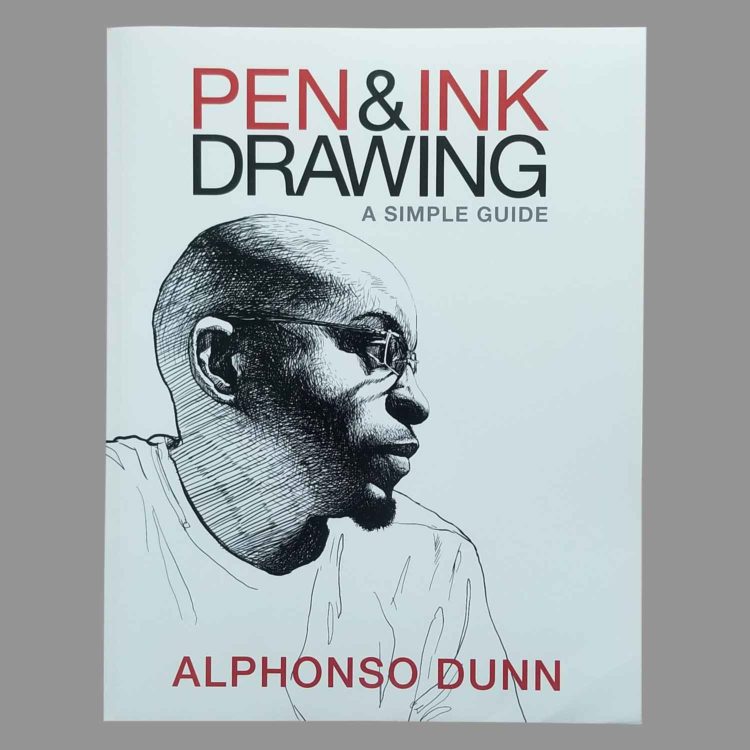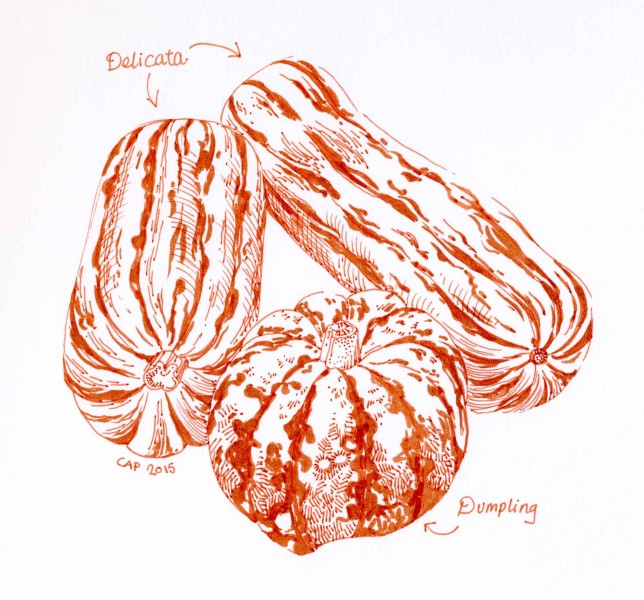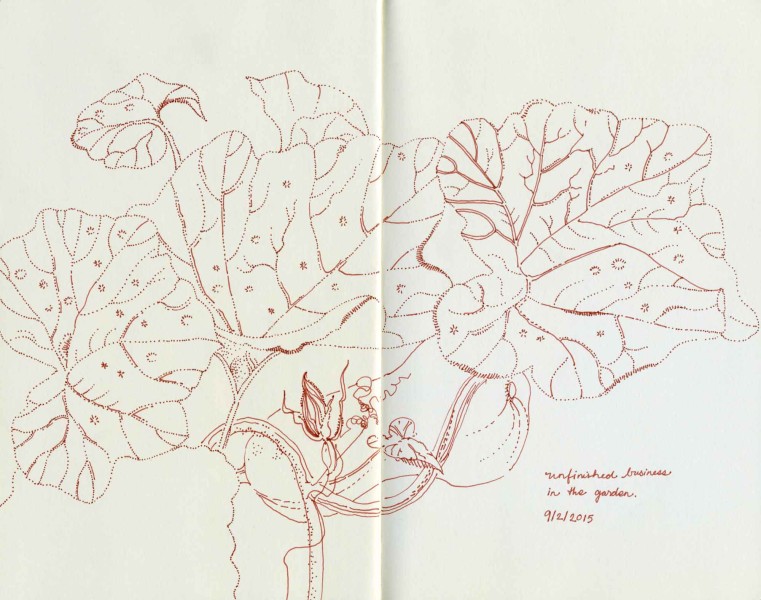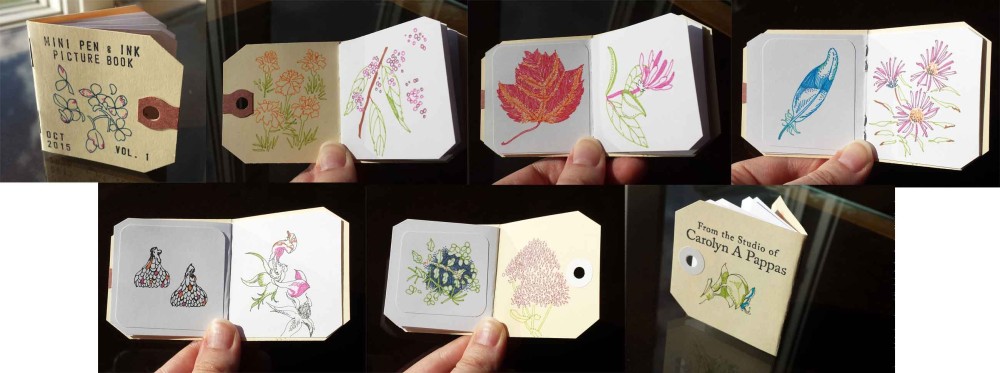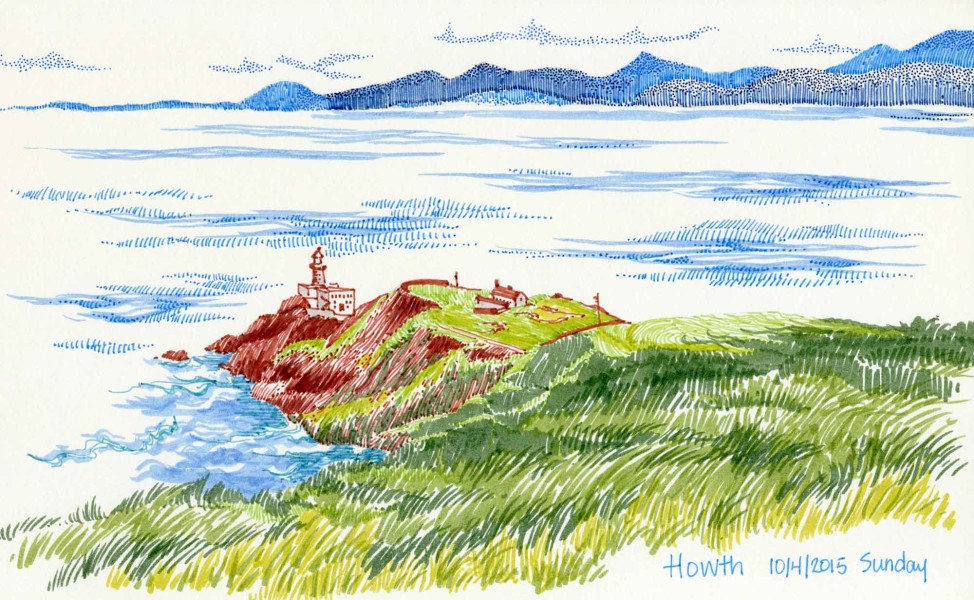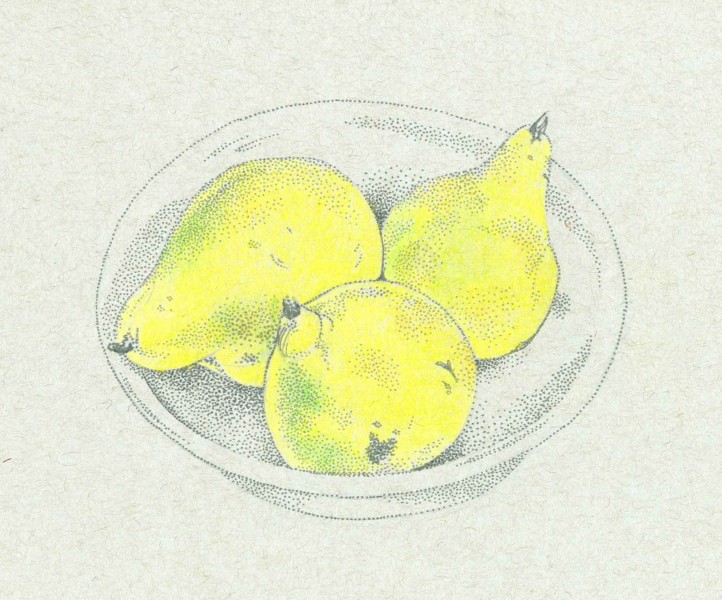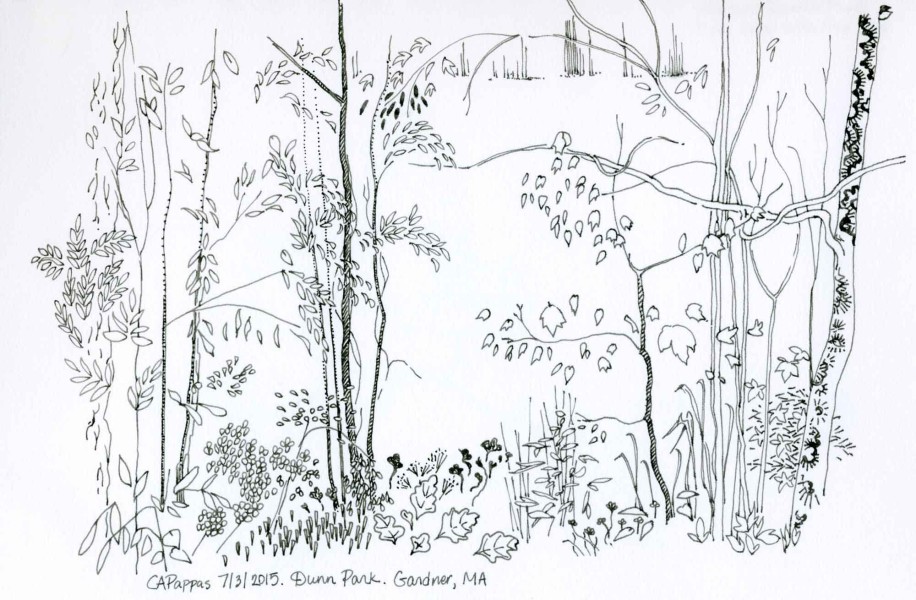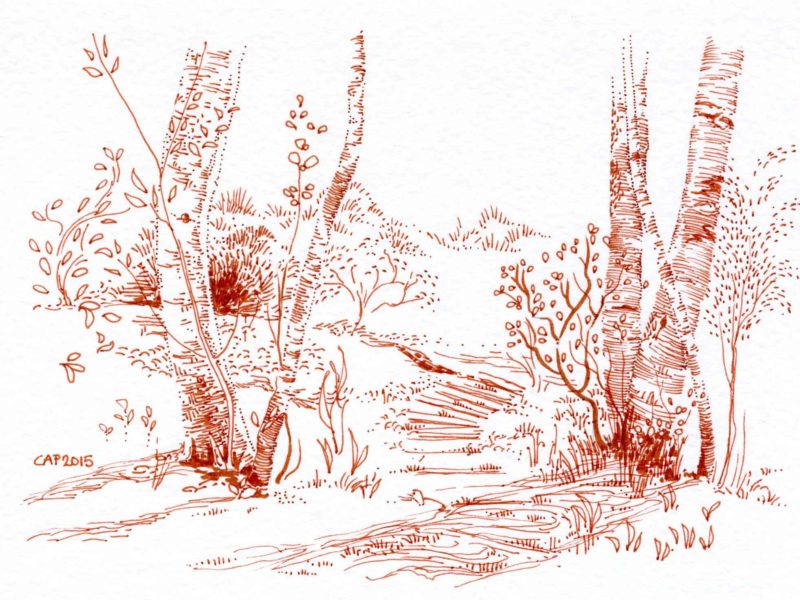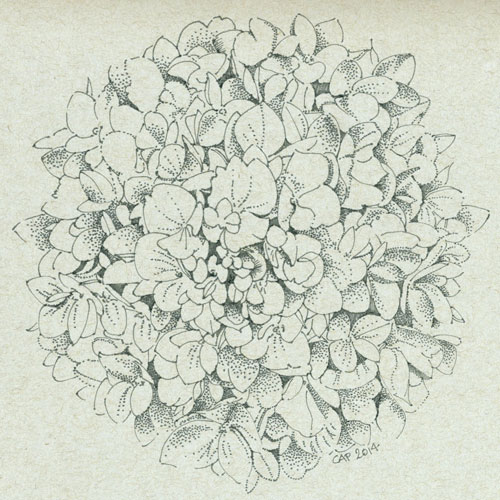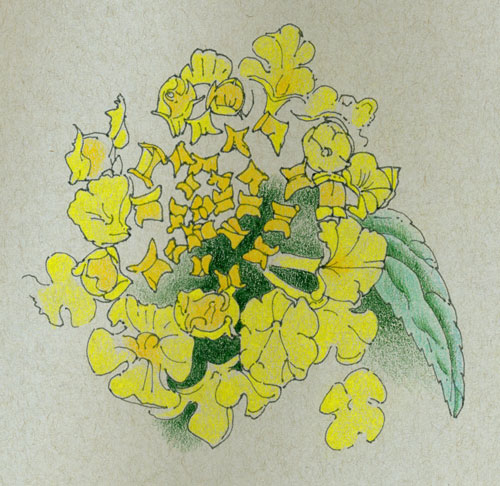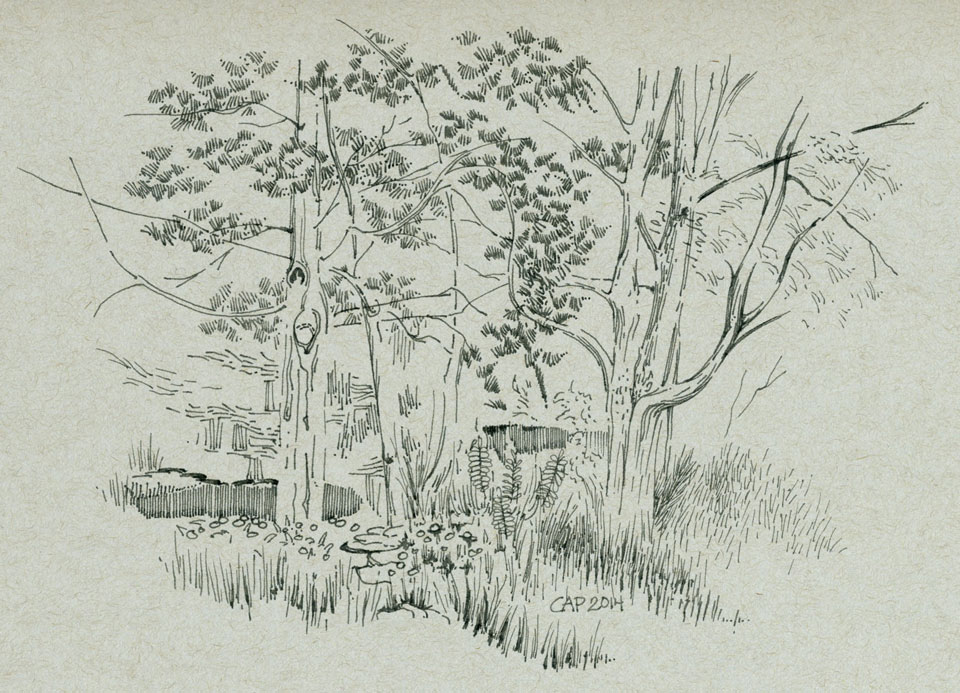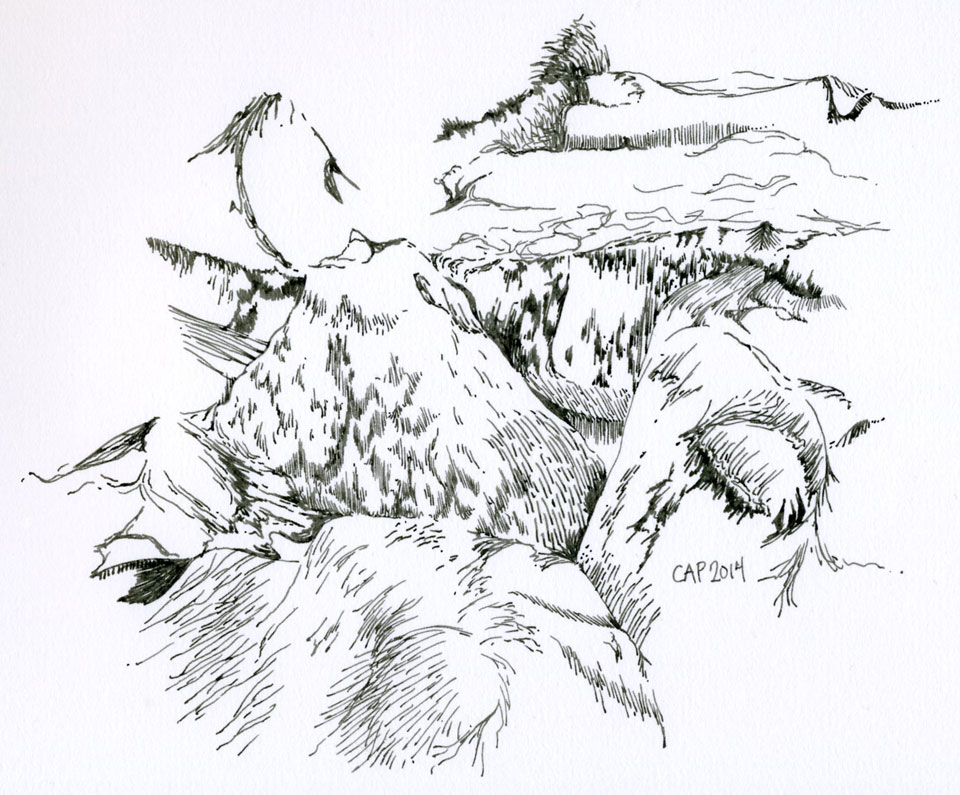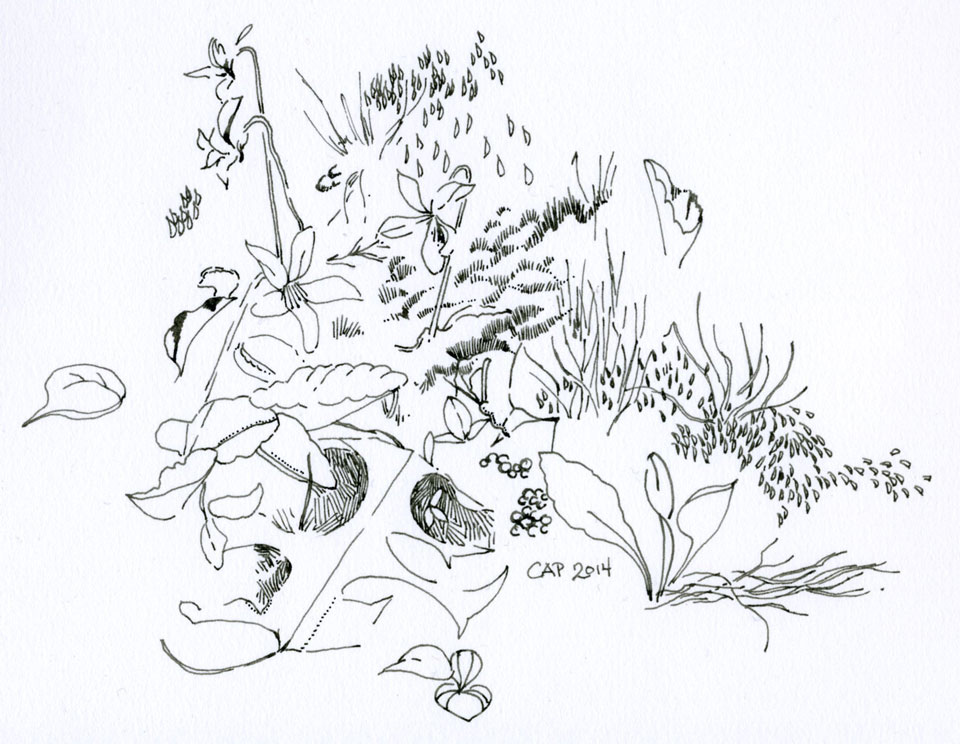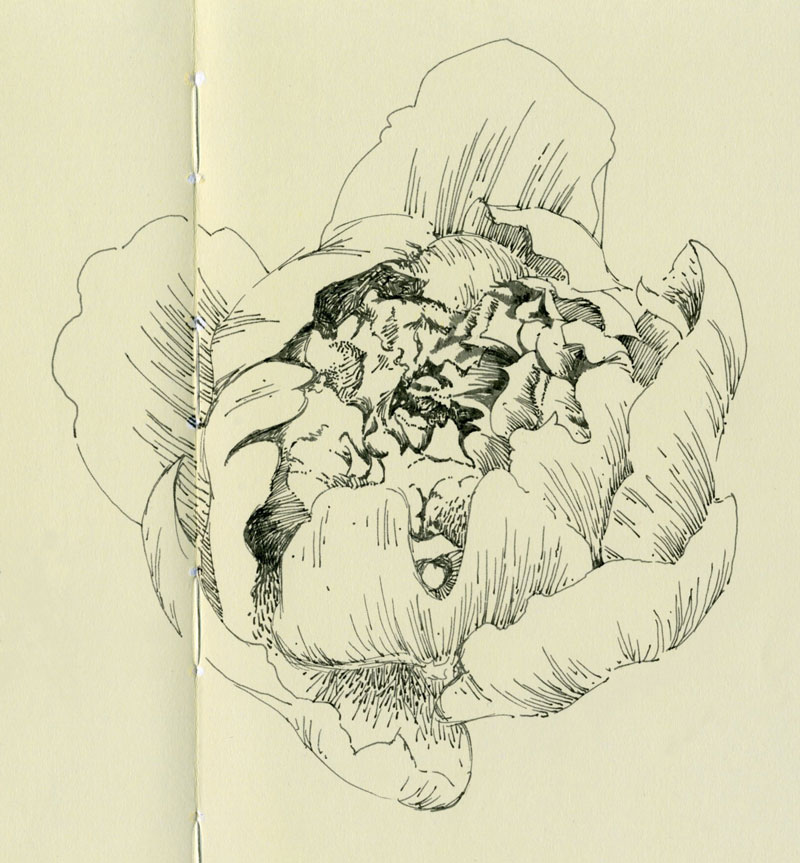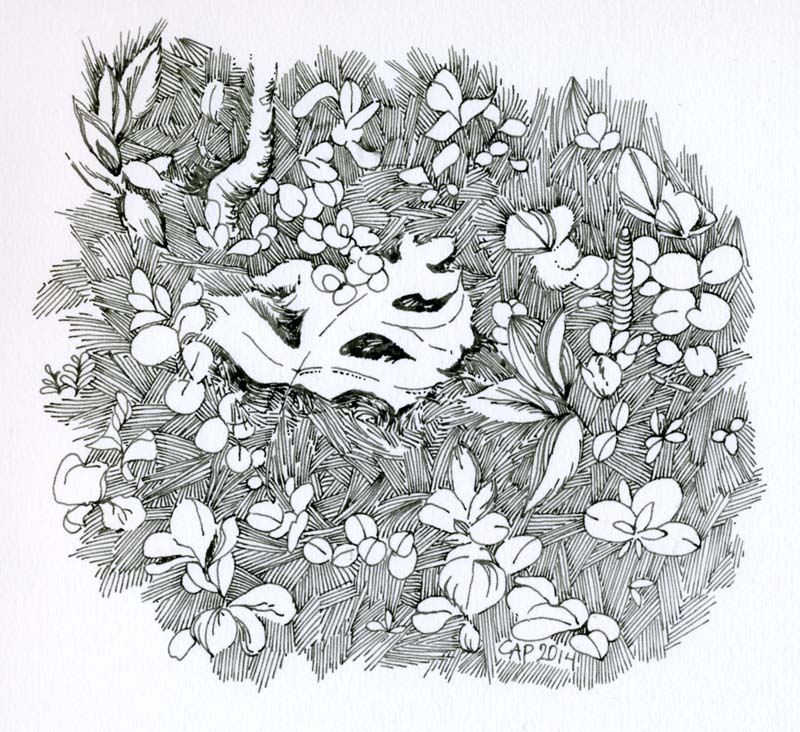- Pen & Ink Drawing: A Simple Guide by Alphonso Dunn. This is the most recently published book out of all of these. The author’s passion about the topic comes through so strongly when reading this book. There is a lot of basic drawing instruction included, such as info on value, form, and composition. There is also a chapter on sketchbooking, where the author shows examples of his own sketches. One thing that I thought was interesting was that the drawings seem very “soft,” as if drawn with pencil. Looking closely, I tend to think that this has to do with how the art was reproduced. I highly recommend checking out this book as well as Dunn’s expansive YouTube channel. Dunn also came out with a companion workbook which I haven’t gotten a chance to see yet.
- Creating Textures in Pen & Ink with Watercolor by Claudia Nice. This book and the following one are very similar but Nice’s work always made me smile so I decided to get both books and see what the differences are. One of the main criticisms of Nice’s books on Amazon was that same content has been recycled and used in several books. I didn’t specifically notice that with these two books, although there was some overlap. One thing that really distracted me throughout both of these books was the odd style of handlettering. I would have much preferred a standard printed font for ease of reading. I enjoyed the wide variety of subject matter with quite a bit of still life material. She also uses colored inks in some drawings. Nice uses rapidograph pens almost exclusively.
- Creating Textured Landscapes with pen, ink and watercolor by Claudia Nice. In the previous book, Nice focuses on capturing textures of a variety of man made and natural substances. In this book, Nice shifts her focus to nature and how to incorporate the different elements into a landscape style painting. There seems to be more watercolor content in this book, and more pen and ink material in the former. There is one chapter devoted to incorporating architecture into the landscape and covers perspective nicely. The landscape format of the book also seems to fit nicely with the subject matter. I’m not sure which book I prefer more; I’m glad I got both.
- The Technical Pen by Gary Simmons. Although this book is specific to technical pens (rapidographs), it contains a lot of helpful information for general pen and ink drawing. Disposable fineliners like Microns have similarities to technical pens so a lot of the demo illustrations wouldn’t necessarily have to be done with a technical pen. Many of the drawings are highly stylized and have more of an illustrative quality. My favorite part was when the author redid the same drawing several times using different types of pen strokes to show the variation possible. There is a good mix of “tight” and “loose” drawing styles.
- Rendering in Pen and Ink by Arthur Guptill. I’ve had this book for years and it never fails to inspire. It’s such a classic. I love that in addition to showing many drawings, the author analyzes them and explains what works and what could be improved. There are also sample artworks from different artists, not just the author of the book. It’s really heavy on architectural drawings but there are natural elements incorporated within them. There are also a fair number of portraits included.
- Pen & Ink Techniques by Frank Lohan. This book has some good info about planning out the drawing, including matting, and has some very useful suggestions about avoiding common errors. Demos have step by step instructions which makes this book a good choice for a beginner. I wish this book featured less architecture and more natural elements. This was also the shortest book out of all of them.
Stay tuned for more pen and ink themed goodness (naturally). If you know of any other useful pen and ink books or resources, please let me know in the comments and I’d love to check them out.
